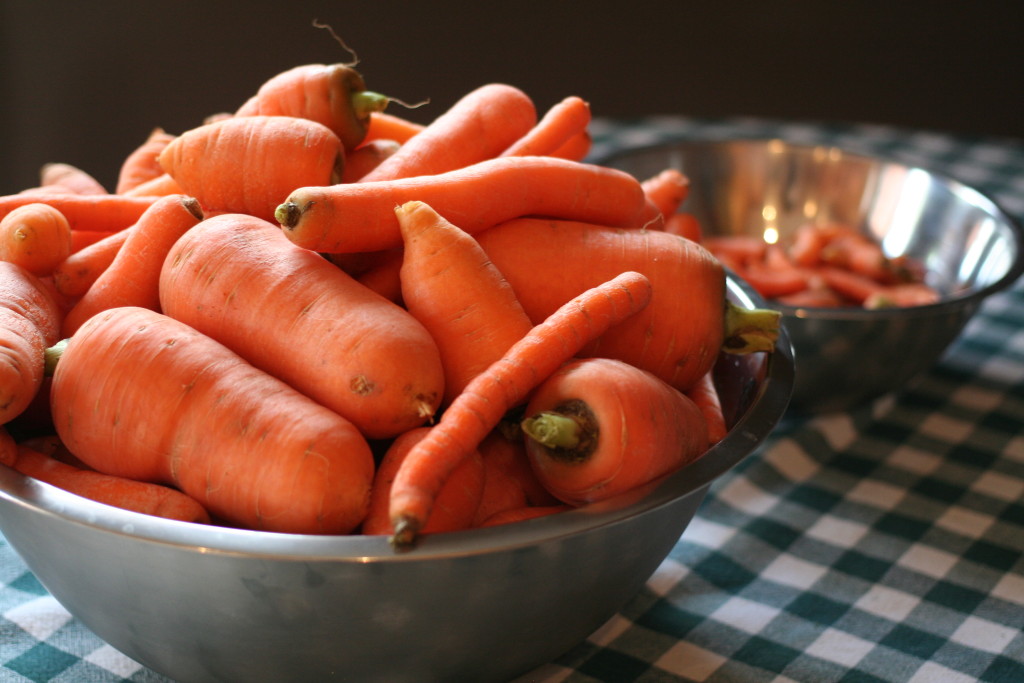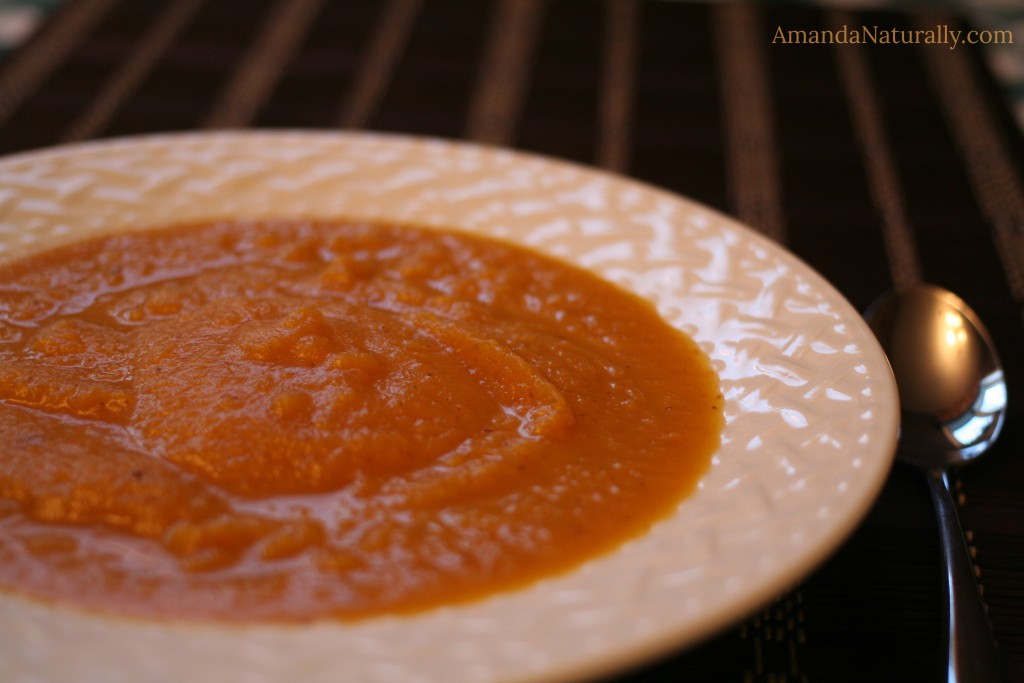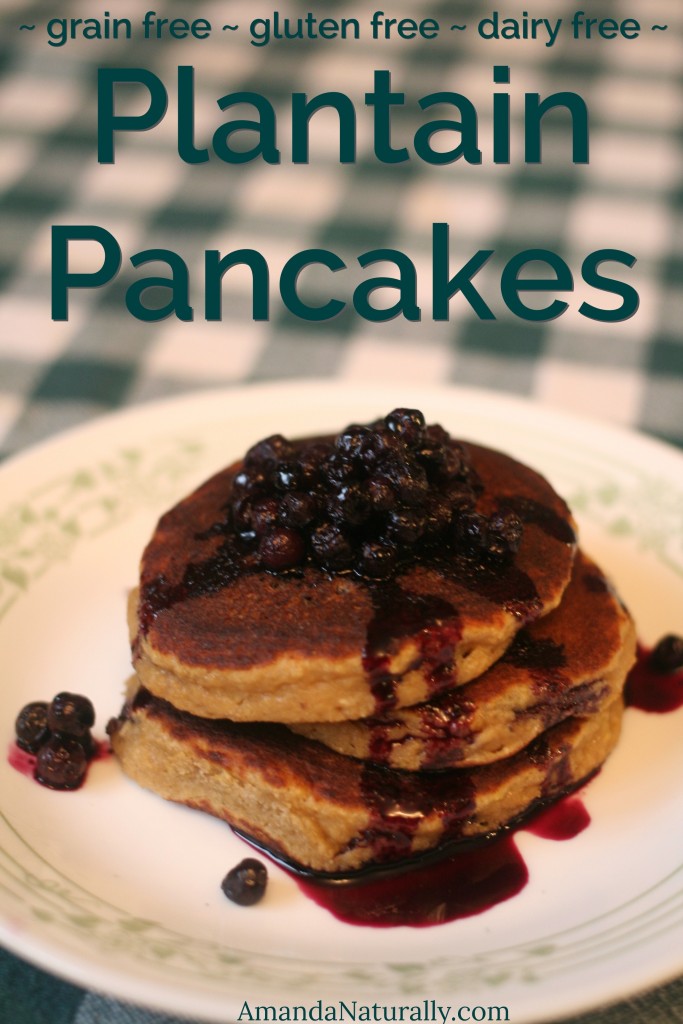 I used to LOVE pancakes. Seriously love them. I mean come on, refined carbs + sugar + maple syrup – what’s not to love? Interestingly, as I’ve changed how I nourish my body, my palate has also changed pretty dramatically (I say this as I type away while snacking on liver pate…geez, who am I?). Sweet breakfasts simply don’t satisfy me in the mornings anymore. Give me savoury every morning and I’m happy! Well maybe not every morning….
I used to LOVE pancakes. Seriously love them. I mean come on, refined carbs + sugar + maple syrup – what’s not to love? Interestingly, as I’ve changed how I nourish my body, my palate has also changed pretty dramatically (I say this as I type away while snacking on liver pate…geez, who am I?). Sweet breakfasts simply don’t satisfy me in the mornings anymore. Give me savoury every morning and I’m happy! Well maybe not every morning….
Every so often I still get a craving for pancakes, and since I eat incredibly nourishing food most of the time, I totally give in and enjoy! I’ve tried my fair share of gluten-free and paleo pancake recipes and have a few thoughts about them…
- The whole “just mash 1 banana with 2 eggs and fry it – it tastes just like a pancake!” is a flat out lie. It does not taste like a pancake. It tastes like banana-y eggs.
- Just because something is gluten-free, does not make it healthy. In fact, when I see “gluten-free” on a packaged product, I run the other direction. Simply using a gluten-free flour in your standard recipe will remove the major gut-irritant (or allergen for some), but it’s still a refined-carb-laden food. You’ll get a massive blood sugar spike, subsequent insulin spike and 1.5 hours later you’ll be starving and/or completely lethargic and ready for a nap. No thanks.
- Most “gluten-free” pancake recipes use oat flour, which while technically is gluten-free, both clinically and personally I have found that oats are a no-go until a massive amount of gut healing is done. (FYI 20-25% of certified GF oats are still cross contaminated with gluten)
- Most “dairy-free” recipes use margarine – yuck.
- There are many “grain-free” or “paleo” pancake recipes that use lots of arrowroot or tapioca flour. And while these are definitely grain-free, they are still just white flours. I sometimes use these flour, but in very moderate amounts. Not as the main ingredient in a recipe. Again, just because something is “grain-free” does not make it healthy.
Now I’m not saying you can’t enjoy pancakes or waffles with maple syrup! Just know if/how it’s going to impact your body. Flooding my body with refined carbs is not a good scene for me. It results in stomach aches, fatigue and crazy hunger/carb cravings. Not worth it.
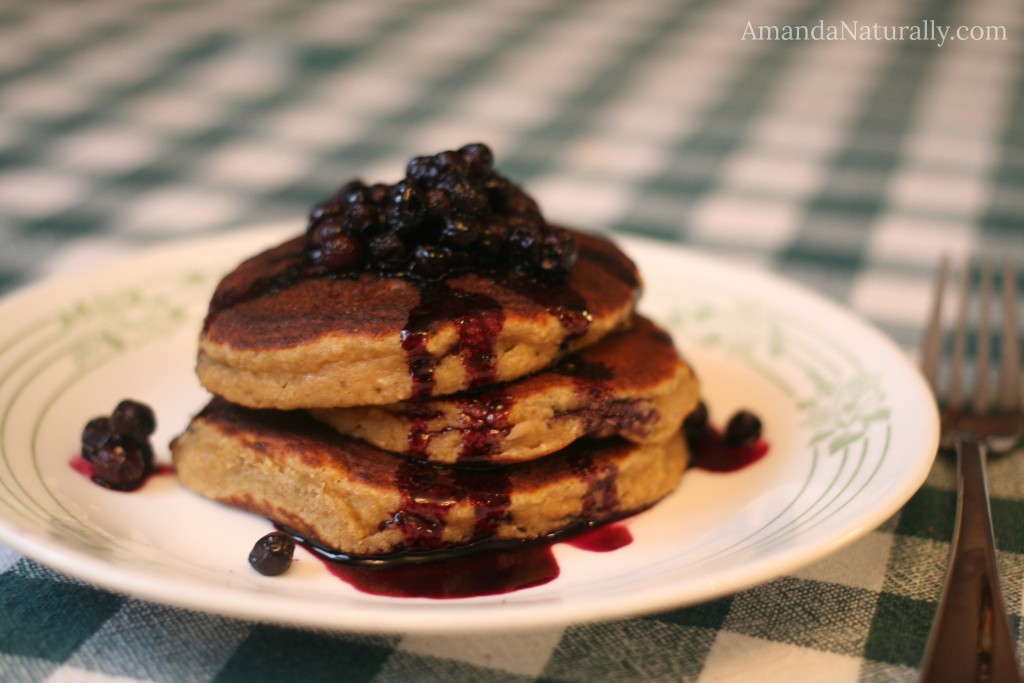
So how do I enjoy pancakes then? Well I make sure to use a real food as the main ingredient! There are lots of recipes out there that use pumpkin or sweet potato as the base – which are good – but I love using ripe plantain. The consistency of the pancakes is so similar to what I remember (disclaimer – it has been over 5 years since I’ve had a real pancake, so I may not remember exactly correct…) and the flavour is on point with just a hint of banana.
I usually just use real maple syrup on top and the hubby uses goat butter and maple syrup. However, occasionally I get fancy and make a quick berry-reduction to top the pancakes. Bonus is it further decreases the sugar!
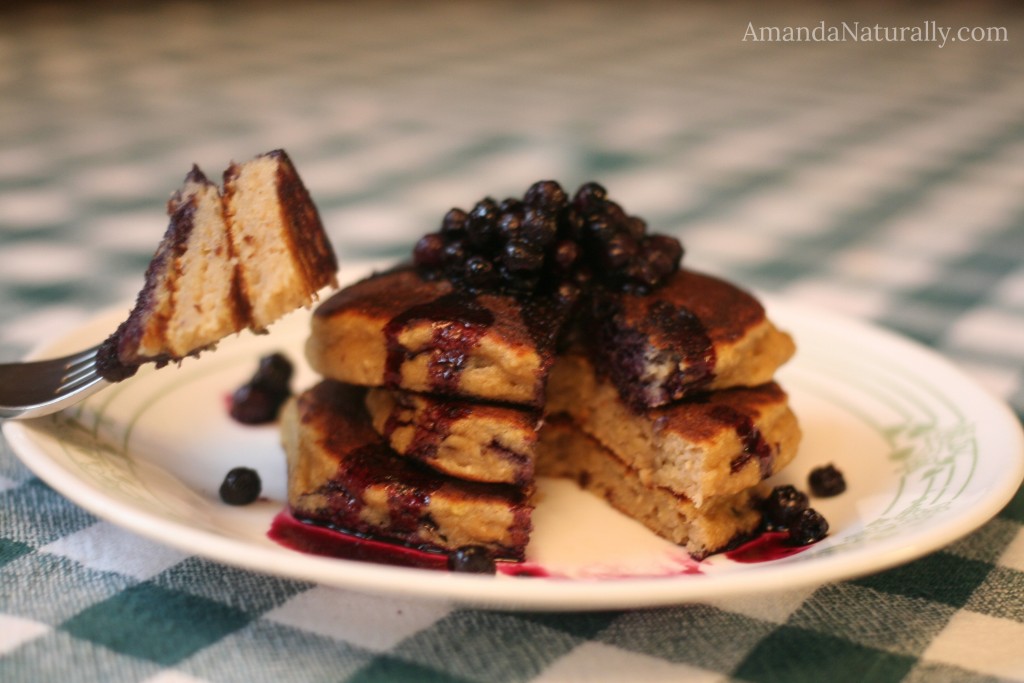
Plantain Pancakes with Blueberry Syrup (optional)
1. I love this recipe because it uses real ingredients. The main ingredients are plantains, eggs and coconut. So really it’s just like having eggs and plantains fried in coconut oil! But seriously, real food results in satiety, energy, nutrients, gut-supporting fibre…this list goes on and on!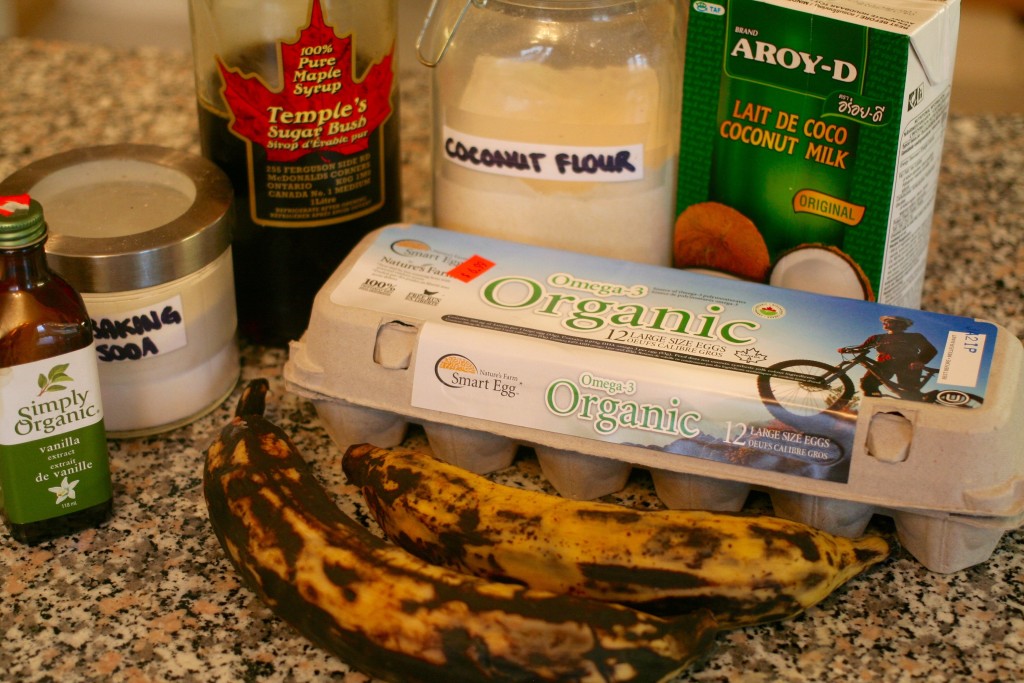
2. This is what a ripe plantain looks like:
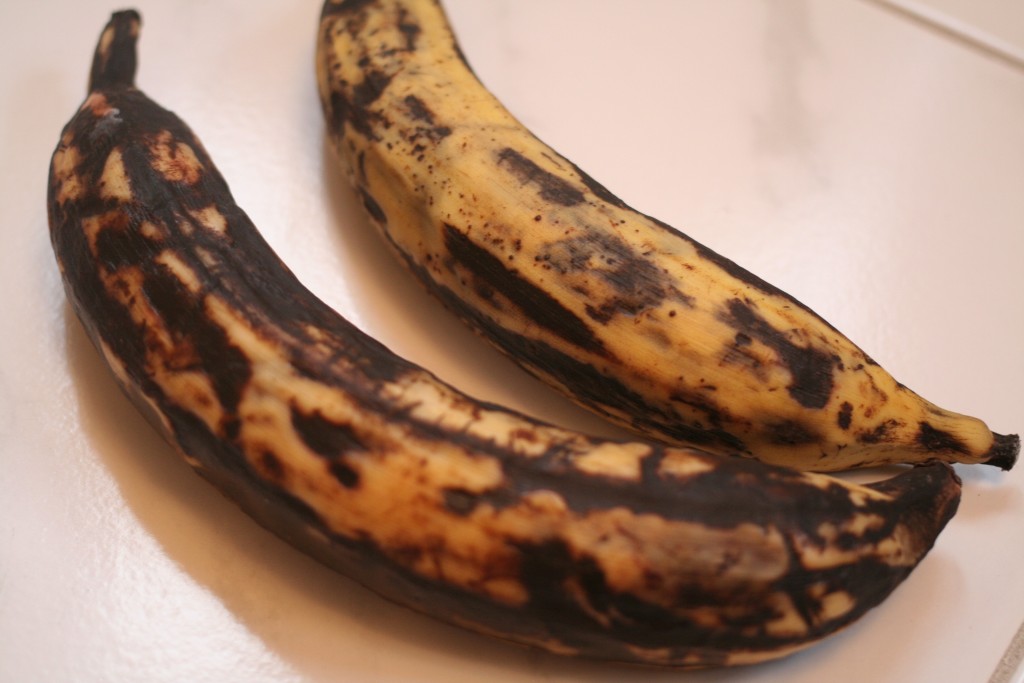
3. This is how you peel a plantain:
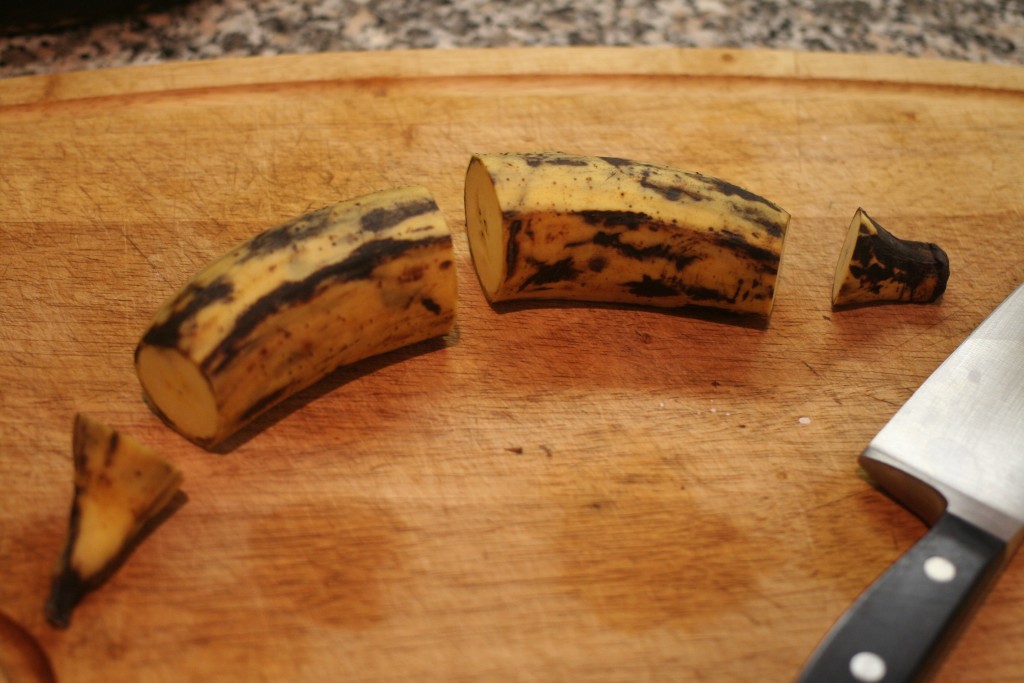
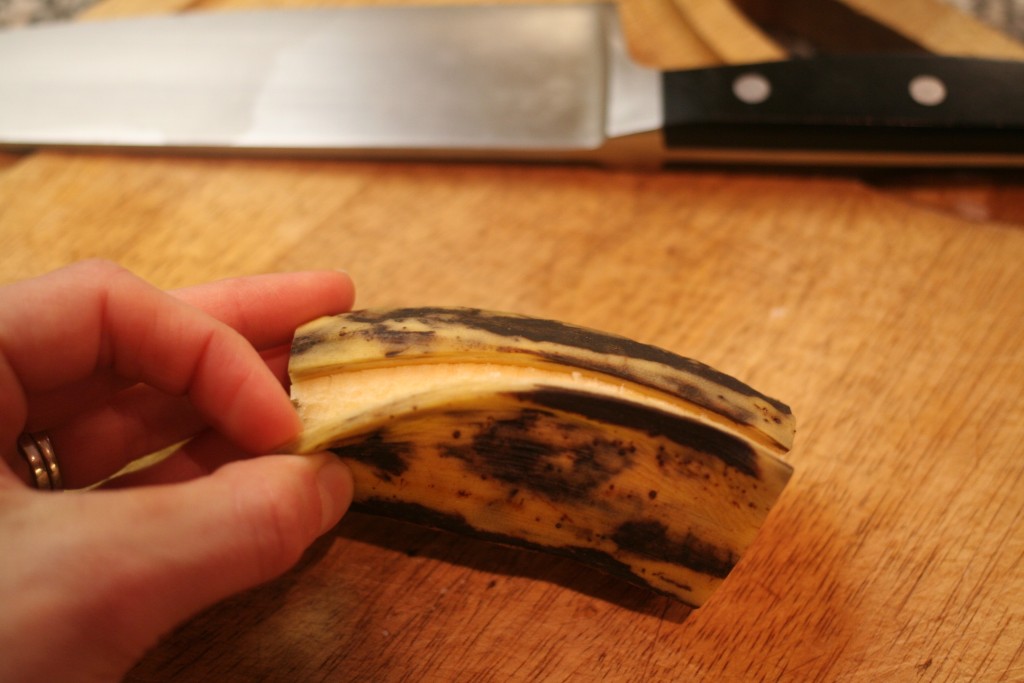
4. Patience is key for this recipe. Don’t try to flip too early! There’s no gluten to hold the batter together before it’s cooked, so let it cook! You want it almost fully cooked through before flipping it.
5. Also, don’t increase the heat to have them cook faster. It doesn’t work and they will just burn.
6. Egg-Free option. I have made this recipe using 3 “gelatin-eggs” to be AIP compliant, and it does work pretty well. The consistency isn’t quite right, but it’s still delicious. To make this with gelatin eggs, do the following:
Combine all main ingredients (except for eggs) and blend well.
Mix 3 tbsp gelatin with 3 tbsp luke warm water.
Then add in 6 tbsp boiling water and whisk vigorously.
Add to batter, blend immediately and start cooking!
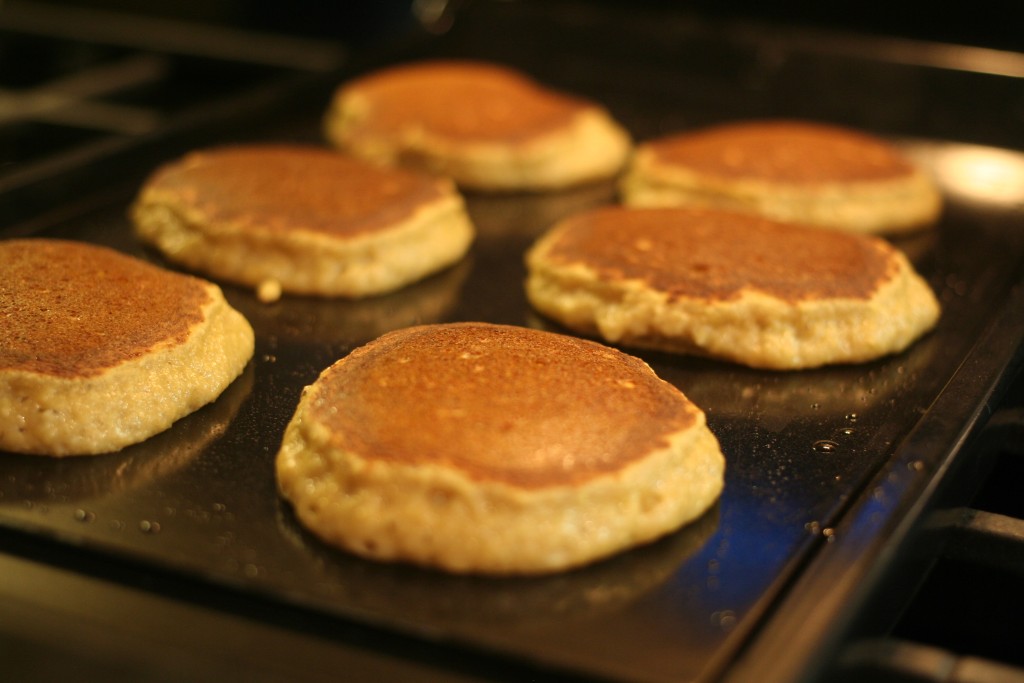

- 2 ripe plantains (approximately 3 cups roughly chopped or 2 cups pureed)
- 3 eggs
- 1 tsp vanilla extract
- 1 tbsp maple syrup
- 2 tbsp full-fat coconut milk
- ¼ cup coconut flour
- ½ tsp baking soda
- pinch of sea salt
- 1 cup blueberries (I used frozen)
- ¼ cup water
- 2 tbsp maple syrup
- In a high-powered blender or food processor, blend all ingredients.
- Heat a heavy pan over medium heat (medium low if your stove top runs hot!). Add cooking fat if necessary.
- If making blueberry syrup, combine all ingredients in a small sauce pan and heat over medium for 15 minutes or until reduced. Stir occasionally.
- Pour the batter directly on to the pan, keeping pancakes relatively small - max 3" in diameter!
- Wait 3-5 minutes before flipping. You want to cook them most of the way before flipping.
- Flip and cook for another 2 minutes or so.
- Keep warm in the oven at 250F until the entire batch is done.
- 1. Patience is key. Don't try to flip too early! Also, don't increase the heat to have them cook faster. It doesn't work and they will just burn.
- 2. Egg-Free option. I have made this recipe using 3 "gelatin-eggs" to be AIP compliant, and it does work pretty well. The consistency isn't quite right, but they are still delicious. To make this with gelatin eggs, do the following: combine all main ingredients (except for eggs) and blend well. Mix 3 tbsp gelatin with 3 tbsp luke warm water. Then add in 6 tbsp boiling water and whisk vigorously. Add to batter, blend immediately and get cooking!
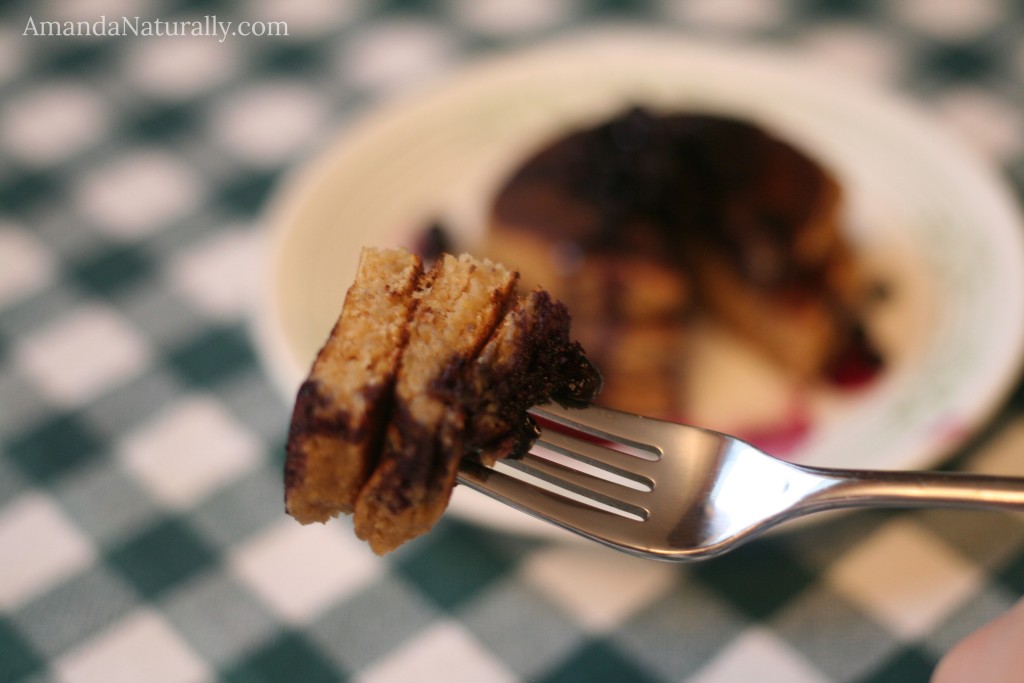

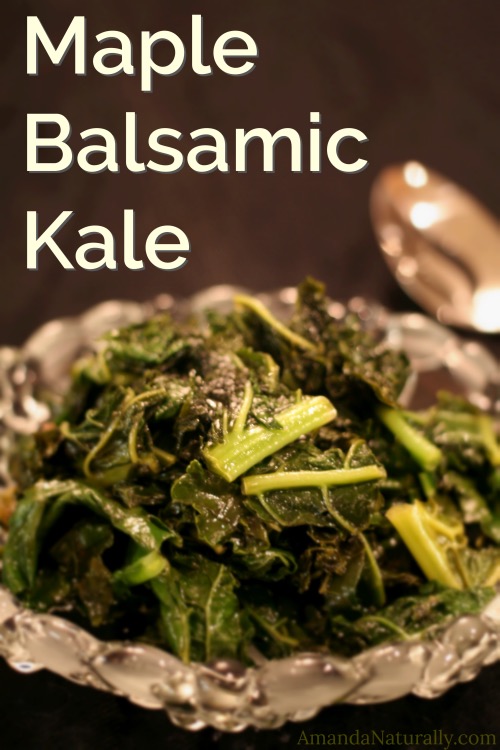 I love kale. But I am also very aware that kale is an acquired taste. I didn’t love it right off the bat, and in fact I was kind of intimidated to cook it!
I love kale. But I am also very aware that kale is an acquired taste. I didn’t love it right off the bat, and in fact I was kind of intimidated to cook it! 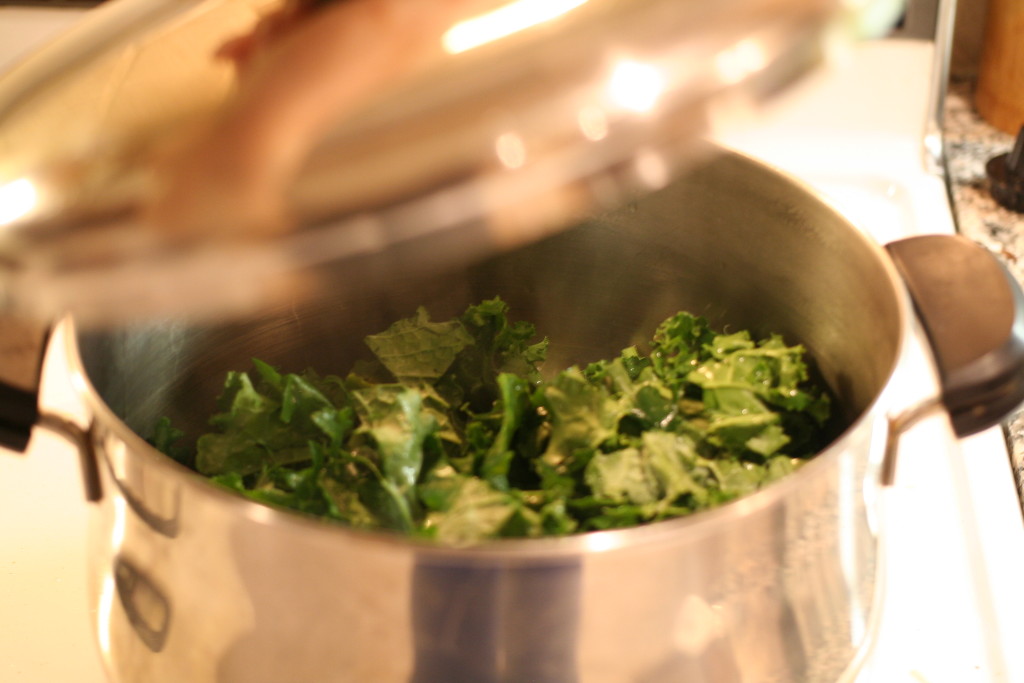
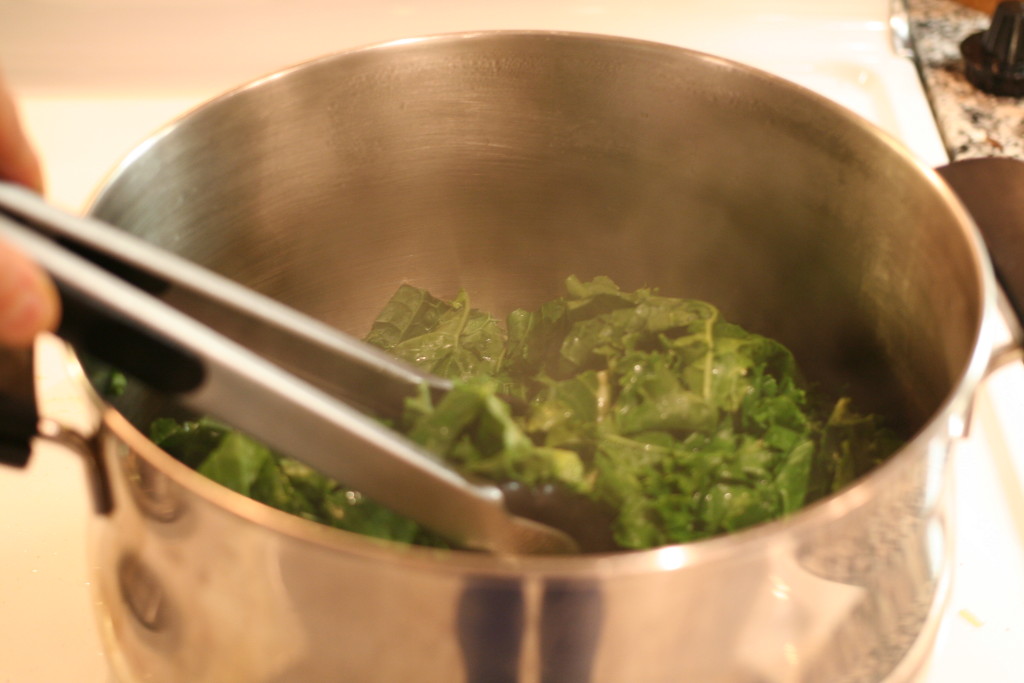
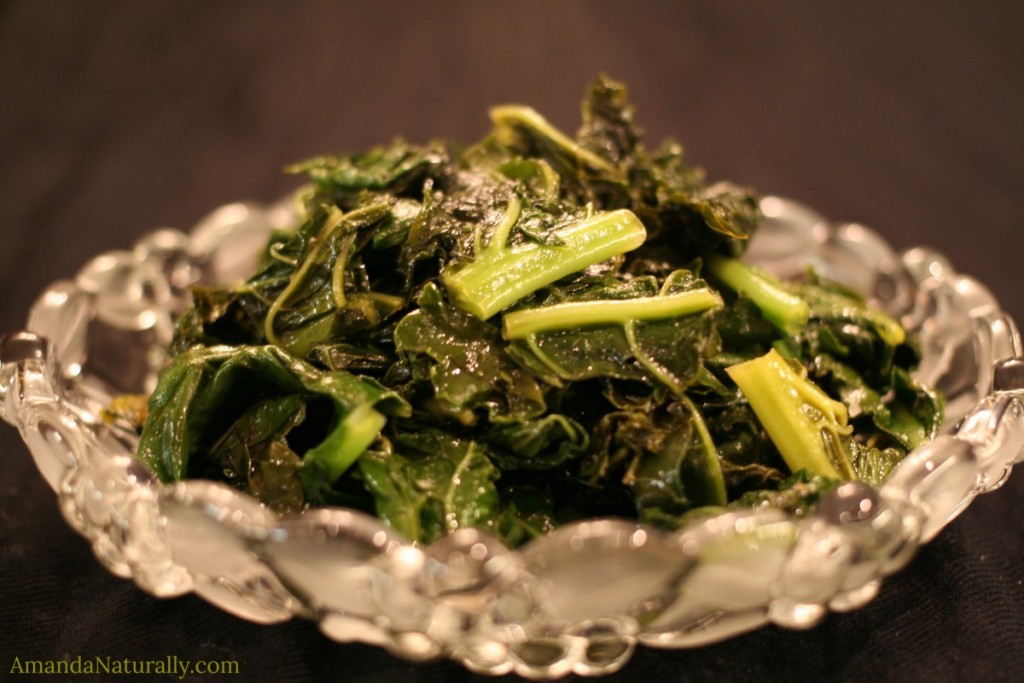
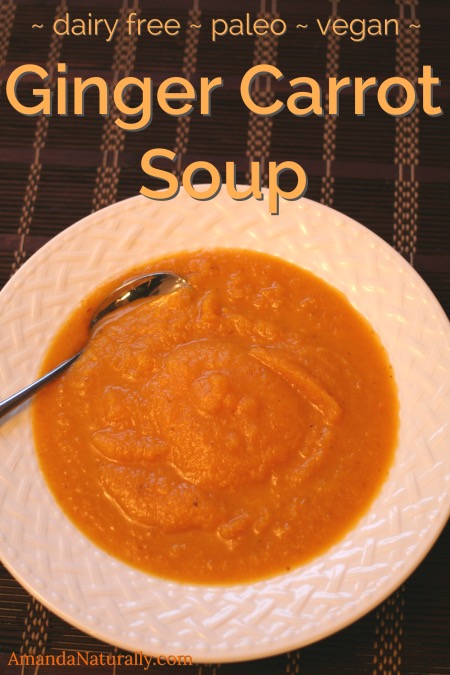 This past weekend we harvested all of the carrots from our garden. We were shocked to see how many there were! We only planted 1 row, but ended up with bowls and bowls of carrots. So in order to use them all while they’re fresh and most tasty, I quickly turned them into my favourite carrot soup. I quadrupled the recipe below and used my 2 largest pots, and still couldn’t get all of the carrots in! I froze most of the soup in both single serving and larger jars that contain 2-3 servings. I always try to make larger quantities of a freezable recipe, for those days when there are no leftovers for lunch, or when life gets crazy and there’s nothing for dinner!
This past weekend we harvested all of the carrots from our garden. We were shocked to see how many there were! We only planted 1 row, but ended up with bowls and bowls of carrots. So in order to use them all while they’re fresh and most tasty, I quickly turned them into my favourite carrot soup. I quadrupled the recipe below and used my 2 largest pots, and still couldn’t get all of the carrots in! I froze most of the soup in both single serving and larger jars that contain 2-3 servings. I always try to make larger quantities of a freezable recipe, for those days when there are no leftovers for lunch, or when life gets crazy and there’s nothing for dinner!